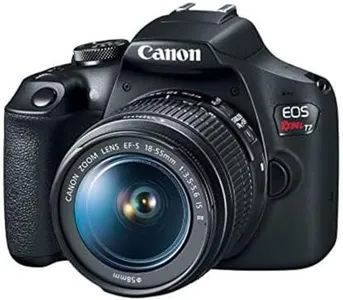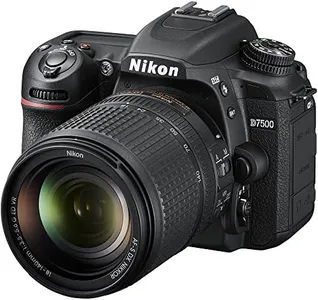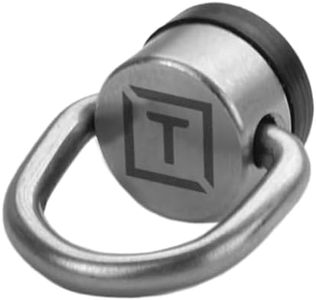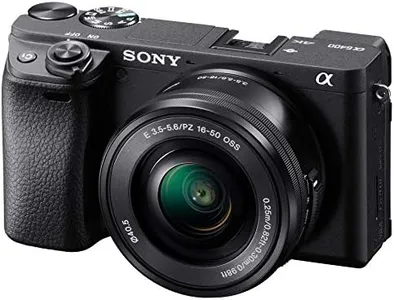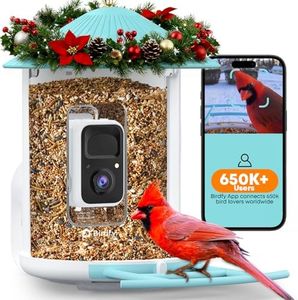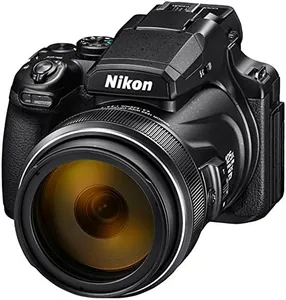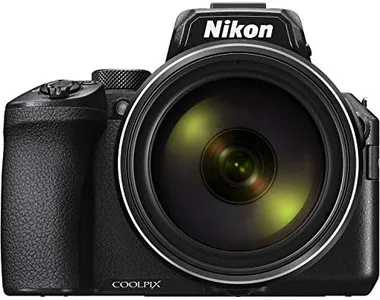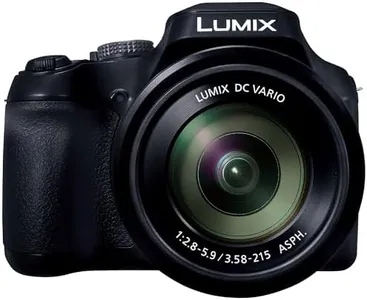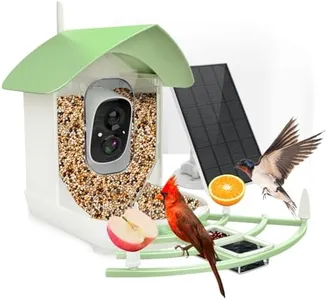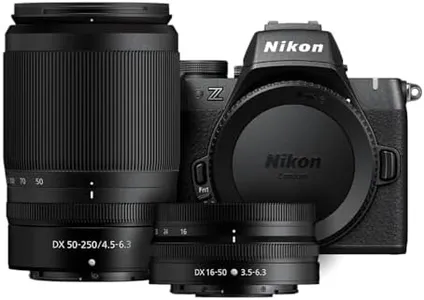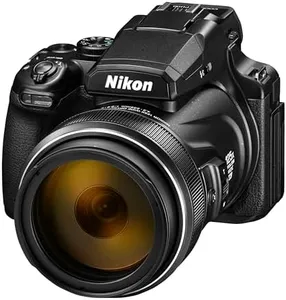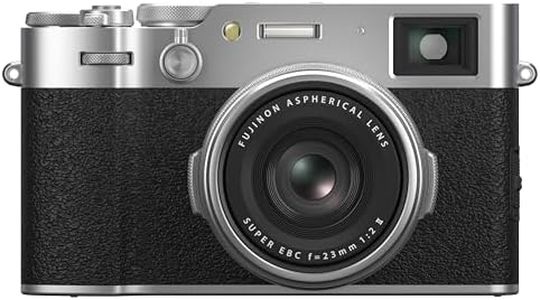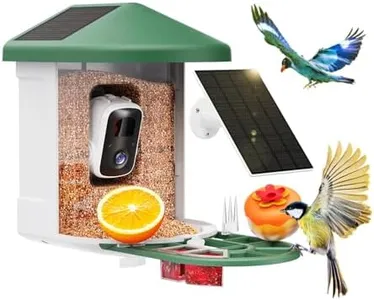10 Best Birding Cameras 2025 in the United States
Our technology thoroughly searches through the online shopping world, reviewing hundreds of sites. We then process and analyze this information, updating in real-time to bring you the latest top-rated products. This way, you always get the best and most current options available.

Our Top Picks
Winner
Canon EOS Rebel T7 DSLR Camera|2 Lens Kit with EF18-55mm + EF 75-300mm Lens, Black
Most important from
8252 reviews
The Canon EOS Rebel T7 DSLR Camera comes with a two-lens kit (EF18-55mm and EF 75-300mm) that offers a decent zoom capability for birding. The 24.1 Megapixel CMOS (APS-C) sensor allows for high-resolution images, which is great for capturing the fine details of birds.
The autofocus system, with 9 points and AI Servo AF, is somewhat basic and may struggle with the fast and erratic movements of birds compared to more advanced systems. The continuous shooting speed at 3 frames per second (fps) is also quite modest and may not be sufficient for capturing action shots of birds in flight. The camera is relatively lightweight at 3 pounds, making it portable for birding expeditions. Yet, it lacks weather sealing, which could be a concern in unpredictable outdoor environments.
The Canon EOS Rebel T7 is a good entry-level option for birders, particularly those who are just starting and want a combination of decent image quality and affordability. However, for more serious birders, the limitations in autofocus and burst mode may be significant drawbacks.
Most important from
8252 reviews
Bird Feeder with Camera Solar Powered : Smart Camera Bird Feeder 2K Live Steam for Outdoor, 5MP Photos, AI Identify Auto Capture Videos, 1.8L Large Capacity, Gifts for Birdlover Mom Dad
Most important from
1006 reviews
The Bird Feeder with Camera Solar Powered is a smart and innovative solution for bird enthusiasts. It features a 2K HD camera that delivers high-quality video, capturing clear and vibrant images of birds without disturbing them. The AI recognition technology adds an educational element by identifying different bird species, which can be shared via the app with friends and family.
Its solar-powered design ensures long-lasting use, with dual-sided solar panels maintaining the camera's charge for up to 180 days, reducing the need for frequent recharging. The bird feeder is built with durable ABS material and a protective coating, making it weather-resistant and capable of withstanding various weather conditions. This makes it highly suitable for outdoor use in gardens, backyards, and patios.
The product is easy to install, offering multiple mounting options such as pole, tree, and wall mounts, which adds to its versatility and convenience. At 5.41 pounds, it is relatively portable for a device of its kind. However, it might still be considered a bit bulky for some users. The reliance on 2.4GHz WiFi could be a limitation if your home network supports only 5GHz. Additionally, the free AI recognition feature is available only for the first 30 days, which might be a drawback for some users who might not want to pay for the service afterward. This bird feeder camera is an excellent gift choice for bird watchers, nature lovers, and families who enjoy observing and learning about wildlife together. It offers a delightful way to bring birdwatching into your daily routine, providing both entertainment and educational value.
Most important from
1006 reviews
Canon EOS Rebel T7 DSLR Camera with 18-55mm Lens | Built-in Wi-Fi | 24.1 MP CMOS Sensor | DIGIC 4+ Image Processor and Full HD Videos
Most important from
8252 reviews
The Canon EOS Rebel T7 is a solid entry-level DSLR that offers good image quality with its 24.1 MP APS-C CMOS sensor, which is large enough to capture sharp, detailed photos—important for birding. Its 18-55mm kit lens has a modest zoom range, roughly equivalent to 29-88mm on a full-frame camera, which might feel a bit short for capturing distant birds without swapping to a longer telephoto lens. Autofocus uses 9 points and includes AI Servo mode for tracking moving subjects, but this system is somewhat basic compared to more advanced cameras, so fast or erratic bird movements might challenge it. Burst shooting is limited to about 3 frames per second, which is lower than many cameras designed for wildlife photography where higher speeds help capture quick action.
The camera weighs about 1 pound, making it fairly portable for day trips, though it's bulkier than mirrorless alternatives. It lacks weather sealing, so caution is needed in wet or dusty conditions common in birding environments. The built-in image stabilization on the lens helps reduce blur from hand shake, a nice plus in the field. Other features like built-in Wi-Fi allow easy sharing of photos, and full HD video is supported if you want to record birds in motion.
While the Rebel T7 is user-friendly and produces great images for general photography, birding enthusiasts aiming for distant subjects and fast action might find its zoom and autofocus performance limiting without investing in additional lenses.
Most important from
8252 reviews
Buying Guide for the Best Birding Cameras
Choosing the right birding camera can significantly enhance your bird-watching experience. Birding cameras are designed to capture detailed images of birds, often from a distance. When selecting a birding camera, it's important to consider several key specifications that will impact the quality of your photos and your overall experience. Understanding these specs will help you make an informed decision based on your specific needs and preferences.FAQ
Most Popular Categories Right Now




